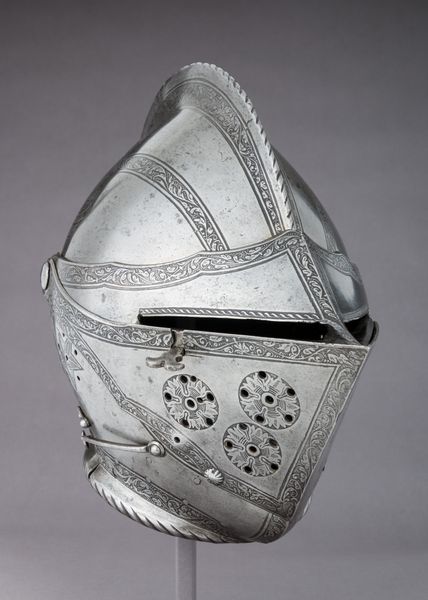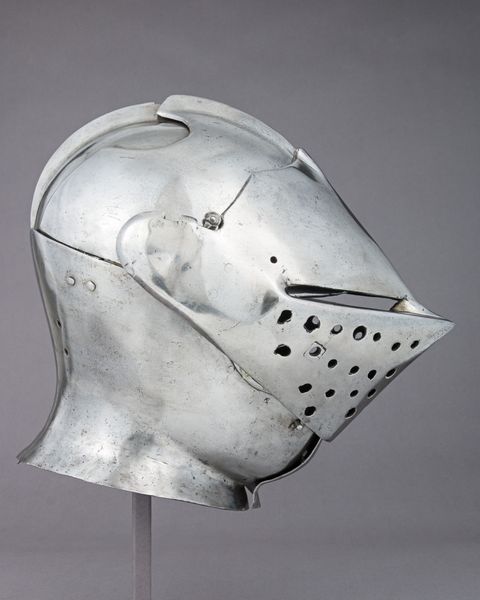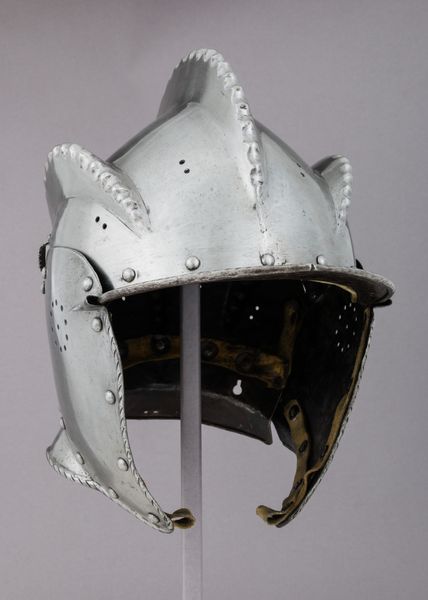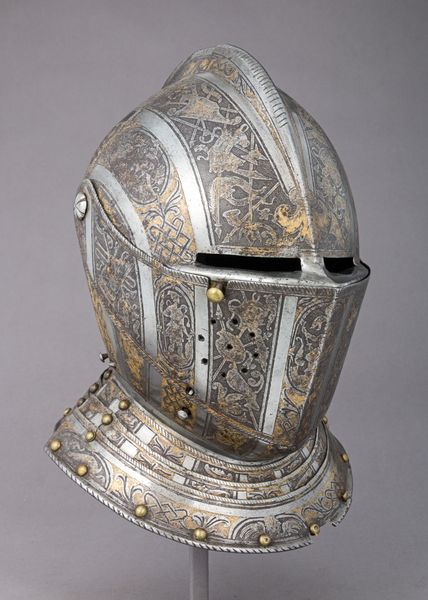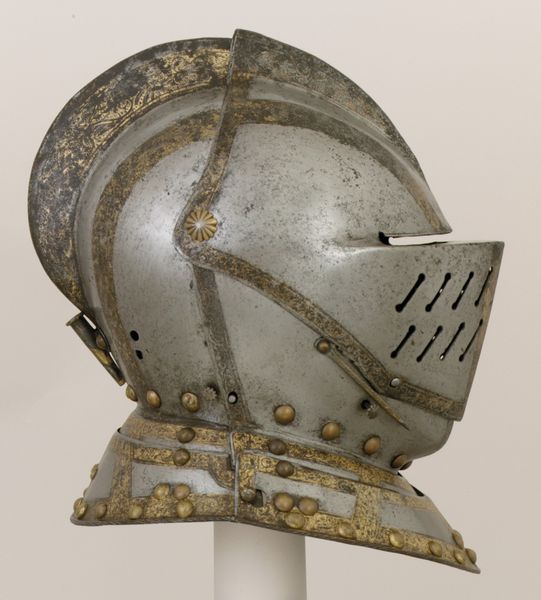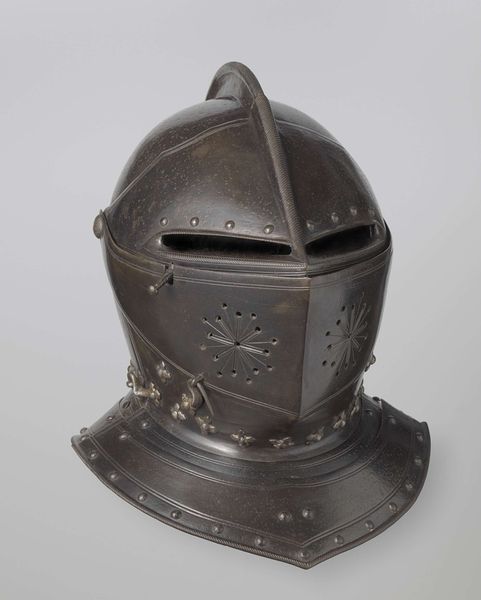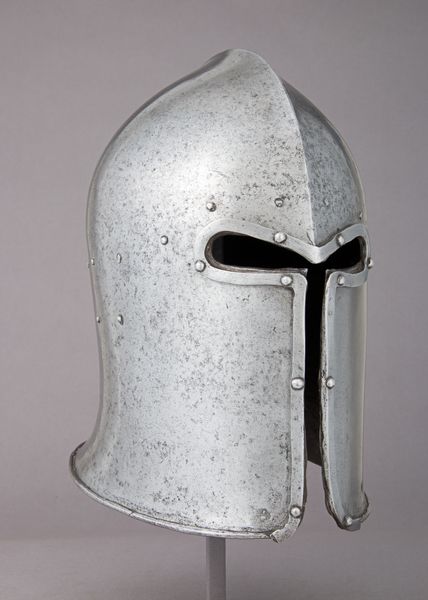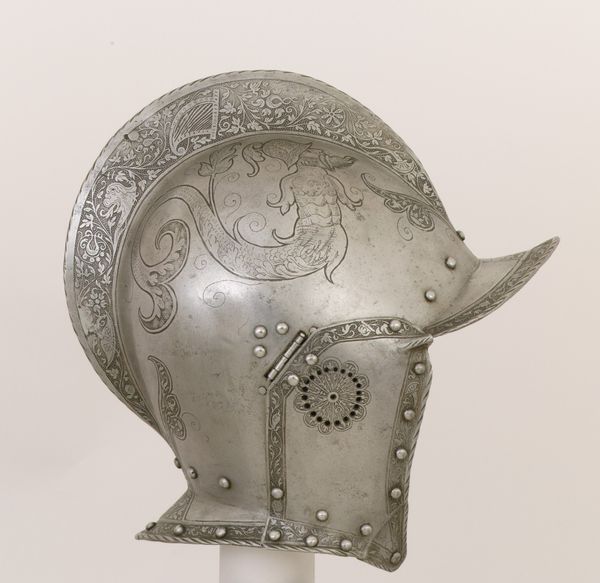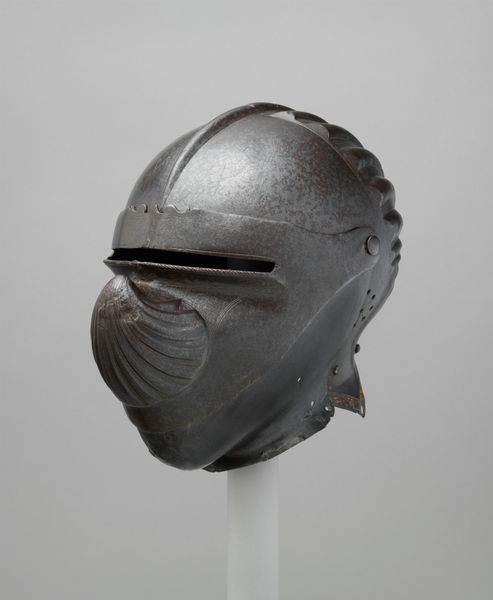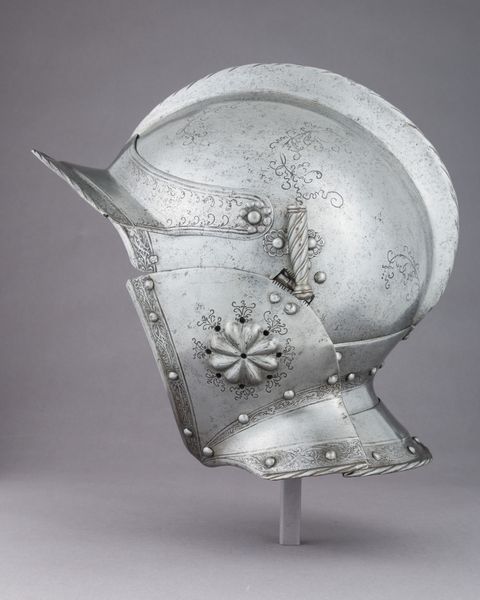
metal, sculpture
#
medieval
#
metal
#
sculpture
#
sculpture
#
history-painting
#
armor
Dimensions: H. 10 1/2 in. (26.7 cm); W. 8 5/16 in. (21.1 cm); D. 12 1/4 in. (31.1 cm); Wt. 6 lb. 3 oz. (2803 g)
Copyright: Public Domain
Curator: Just look at this marvel—a close helmet made for tourney combat, dating all the way back to 1552. It’s currently housed in the Metropolitan Museum of Art. Just imagining the clash of steel that this piece once witnessed! Editor: It’s austere and imposing. More like a polished skull than something offering actual protection, to be honest. All those tiny ventilation holes make me feel a little claustrophobic just looking at them. Curator: Claustrophobia aside, it embodies a pivotal moment in history where artistry and warfare converged. Metalworking, then, became a form of artistic expression. The helmet's creation is credited to Daniel Hopfer. Editor: Absolutely. I think pieces like this challenge the traditional art-historical narrative that often overlooks functional objects, or considers art and craft separately. I mean, how much artistic labor and conceptual thinking must have gone into this piece? Curator: A good point! Notice, though, how much refined ornamental etching and precision tooling went into the making. I find myself dreaming about the anonymous craftsman hammering away, meticulously crafting each curve and contour with focused intention. You can sense that he labored lovingly over his materials. Editor: I find myself thinking more about the elite identity performed by such armor. How wearing such pieces functioned as symbolic displays of class, gender, and military power. Curator: True, there is much that we can unpack around privilege in the tournaments—I agree. At its most basic, however, one is always seeking safety in battle. In a violent society, sometimes a person just needed to cover their head! Editor: It’s also about control over your image, or a type of masking of personhood—it's not always about individual safety, but creating public images around invulnerability. I suspect these elite men and women wanted the population to assume things about their power through wearing that equipment. Curator: You're right to nudge me on what constitutes "basic" or even "safety," particularly given whose security this helmet sought to ensure, and at what cost to others. That it has been around this long, what, over five hundred years? What would its maker have thought of us seeing it now? Editor: Right! Like who are the gatekeepers that determine what’s worth remembering or preserving? Thanks for sharing the space to consider these tensions.
Comments
No comments
Be the first to comment and join the conversation on the ultimate creative platform.
